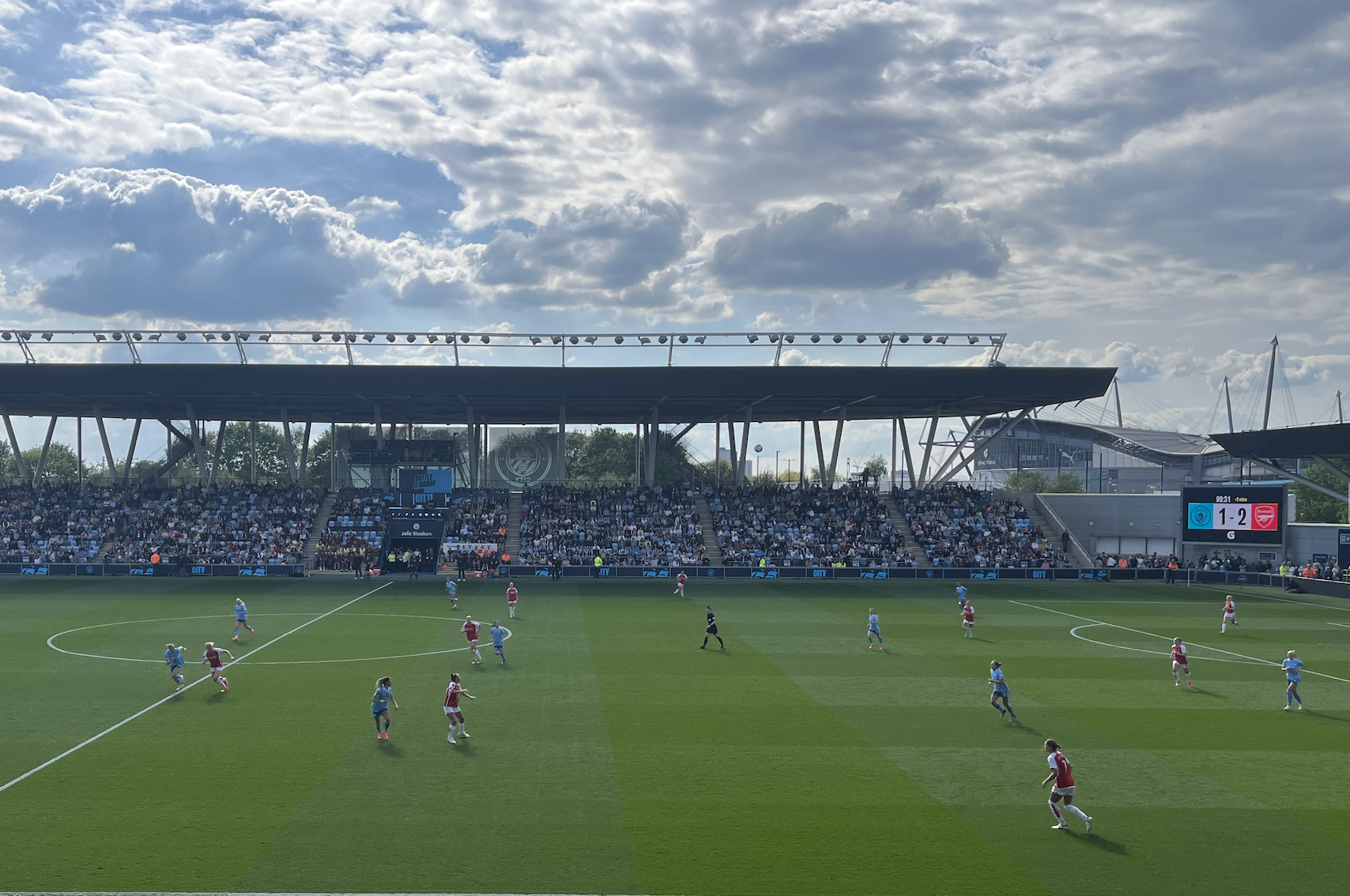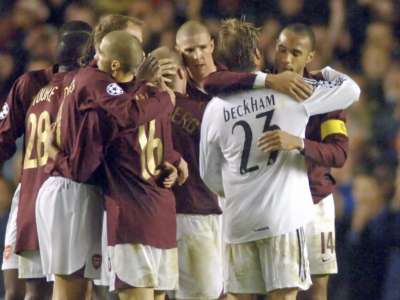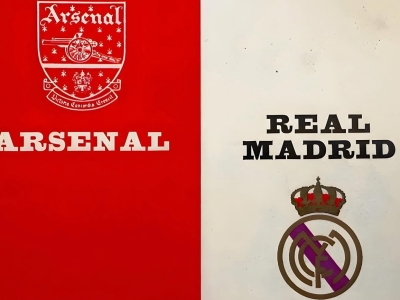Introduction:
Arsenal played their first of two final fixtures this season, taking on title chasing Manchester City at the Joie Stadium. Arsenal looked to finish the season on a high, with little to play for but pride, with City hoping to take a huge step towards the title with a win here (based on Chelsea’s recent loss to Liverpool).
Lineups:
Arsenal made four changes from their 1-1 draw with Everton - Frida Maanum for Stina Blackstenius, Cloe Lacasse for Caitlin Foord, Kyra Cooney-Cross for Kim Little and Laia Codina for Steph Catley.
Manchester City made just one change to their almost consistent starting XI, based on their previous fixture, with Kirstin Casparij coming in for Alanna Kennedy.
Manchester City: Keating; Ouahabi, Greenwood, Aleixandri, Casparij; Coombs, Hasegawa, Park; Hemp, Kelly, Fowler.
Arsenal: Zinsberger; McCabe, Codina, Williamson, Fox; Cooney-Cross, Pelova; Lacasse, Maanum, Mead; Russo.
Arsenal in the first half:
Despite the pressing system from Manchester City looking to cover the Arsenal midfield, Cooney-Cross did extremely well to recognise and move into the space to receive balls between the lines. Space would open up for Cooney-Cross when City would drop deeper. This opened up space in the middle of the pitch for Arsenal midfield runners.
With City also marking the wingers extremely well in the first half, Arsenal had little clear-cut attacking opportunities out wide. Instead Arsenal looked to play balls through the lines or in behind the City high line, utilising Leah Williamson’s strong passing ability. Beth Mead would move centrally to receive these passes between the lines, with Emily Fox providing the option out wide. This meant Fox was often isolated out wide, however, and Arsenal were forced backwards, with no-one moving to support her on the flank.
Despite finding space to attack, some of Arsenal’s passing was sloppy and this gifted possession straight back to City.
Another real weakness in attack came from the timings of the runs, with Arsenal still being caught offside on a number of occasions. They could have tested City more if they timed their runs correctly.
Arsenal also failed to demonstrate a clear form of attacking, meaning their decision-making was delayed or poor. Despite getting the ball in promising positions, there was still a degree of uncertainty with their final pass or shot.
Out of possession Arsenal were dropping deep, with Mead and Lacasse often moving into the midfield, leaving Alessia Russo isolated. This allowed City to play a high line and have one of their CB’s drive forward with the ball.
When Park looked to drop deep to receive the ball from Alex Greenwood, this would trigger Arsenal to press, giving Jess Park little time on the ball.
As Arsenal gained more possession and momentum in the game, they pressed higher up, not allowing City to get out and trying to force them into rushed decisions. Arsenal were sloppy out of possession at times, allowing City players to make runs into space, with no-one tracking the runs. Luckily for Arsenal, City failed to capitalise on these runs.
Man City in the first half:
Rather than pressing the Arsenal centre-backs directly, City’s priority out of possession was covering the passing route to Victoria Pelova and Cooney-Cross. Fowler was responsible for pressuring Manu Zinsberger into making a rushed decision.
City won the majority of the aerial duels from set pieces, both in their box and Arsenal’s. They were defensively solid; winning loose and second balls prevented Arsenal from having more chances.
The front three for City had interchangeable positions throughout, but most often we saw Lauren Hemp on the left, Mary Fowler on the right and Chloe Kelly through the middle.
City looked to catch Arsenal out when they pressed higher up, capitalising on the space in behind. When Fox was caught out higher up the pitch trying to win the ball back, City could often escape through the space that opened up on the flank.
Coombs would move out wide to support Hemp, allowing her to make the under or overlapping run. Laila Ouahabi could then move into Laura Coombs’ position centrally, offering another option in and around the box, that Arsenal would have to defend against.
Man City’s positioning in the box was extremely effective when they were on the attack, with overlapping runs and pull backs in the box enough to catch Arsenal out. When City got the ball in the box, Arsenal failed to close them down quickly enough and this awarded City the first goal.
Despite trying to play balls in behind the Arsenal high backline, most of City’s attempts were ineffective.
Arsenal in the second half:
Coming on at half-time, Little allowed Arsenal to hold up the ball in midfield a lot more, giving them better overall control of the game. Throughout the second half, Arsenal’s substitutions were both timed well and extremely effective, capitalising on their possession in an attempt to create more attacking opportunities from the pressure.
Arsenal pressed City higher up the pitch, forcing them to make more mistakes at the back in possession. Their rushed clearances gifted possession straight back to Arsenal. By getting players higher up the pitch they were also more likely to win the loose balls.
When Kennedy replaced Casparij, Arsenal started to find more space out on the flanks, an area they struggled to capitalise on in early periods of this game. They often doubled up out wide, with Hemp forced to defend; they created a lot of opportunities through this avenue.
Out of possession Arsenal defended their box a lot better than they did in the first half, not allowing City players to convert the pull backs.
Man City in the second half:
City failed to get in the final third early on in the second half, with Arsenal able to keep the ball more often and improving their defensive stability. They were slow in their build-up play, looking to play away from pressure and protect their lead rather than push for a second goal.
Out of possession they were put under a lot more pressure than they were in the first half. By constantly playing backwards rather than looking to attack, they invited the pressure from Arsenal. Despite doing well defensively in the first half, they struggled a lot more in the second half to win the loose or second balls from set pieces - this allowed Blackstenius to get the equaliser.
Perhaps City’s best form of defence would have been to attack Arsenal more, looking to catch them out when they pushed higher up the pitch in search of goals.
City failed to close down Arsenal at the edge of the box and this ultimately awarded Little space on the edge of the box. Her brilliant pass and Blackstenius’ run caught City out and gifted Arsenal the late winner.
Closing thoughts:
This was a huge victory for Arsenal; despite having little to play for, it gives them a huge confidence boost and enables them to finish the season on a high. For Manchester City, however, this result is a huge blow to their title hopes, allowing Chelsea to reduce the gap with a win against Bristol City.
Manchester City will hope to return to winning ways in their final fixture against Aston Villa, whilst Arsenal will play Brighton in their final game. Having already secured Champions League football next season, Arsenal will hope for a win to close off the season on a high.








